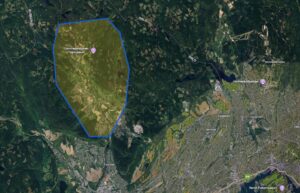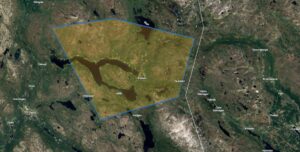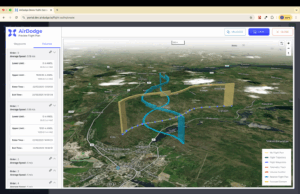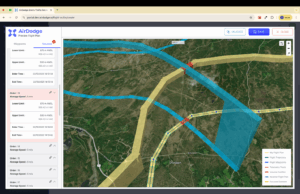By Philip Butterworth-Hayes
The first deployments of two U-space sandbox trials which will pave the way for full commercial U-space services next year are expected to begin in Norway in the first week of November.
Bærum, a municipality close to Oslo, is the site of the first U-space area and the other area will be in the vicinity of Røros municipality, in the north and close to the Swedish border. U-Space services will be provided by AirDodge and air traffic in the area will be picked up by sensors mounted in the test area and fed into the AirDodge cloud. These two airspaces are the most complex and largest initiatives in the Nordics and will be the first ever such deployment of a U-Space sandbox, according to programme participants.
The airspace in Northern Norway is part of the Green Flyway project which aims to build an aerial highway between Sweden and Norway shared between drones and crewed air traffic. AirDodge is expected to deploy a similar airspace in Sweden early next year as the next step in the Green Flyway project.
The two sandboxes have been chosen for their different traffic profiles. The GreenFly U-space area creates a low-level airspace highway between Norway and Sweden. It is geographically remote but very busy with low level logistics traffic and helicopters used by emergency services and reindeer herders. The Bærum U-space area (https://www.unmannedairspace.info/uncategorized/norway-to-test-advanced-u-space-services-at-baerum-and-roros-airport-airdodge/) is close to Oslo and will enable “smart city” drone projects such as drone deliveries.

Bærum U-Space northwest of Oslo city centre
Deployments of these two airspaces will enable commercial testing in a diversity of environments. Ranging from an urban environment close to the city to the remote rugged landscapes of Northern Norway. Commercial drone applications tested will range from powerline and forest inspections to drone delivery. The Norwegian commercial drone market is forecasted to grow to 4.4 Billion NOK (USD 440 million) by the end of 2025,

Røros airspace close to the Swedish border
Initially AirDodge will extract livestream traffic information from its sensor network which picks up ADS-B, MODE-S, MLAT, OGN and ADS-L data from current airspace users up to 500km radius of the U-space area. The AirDodge system builds a three-dimensional map of drone flight authorizations which is automatically deconflicted with other requests, then provides an authorization to fly.

Parallel Flight Authorizations in the AirDodge app
“This is a three-phase programme,” said AirDodge’s CEO Umar Chughtai. “The first phase is an R&D phase where we launch the software with flights limited to 10 parallel operations at one time. The flight plans are plotted on a 3D map which breaks down the airspace into detailed volumes, which means we are not blocking the entire airspace area from any other aircraft operator – which is the reality in the sky at the moment. You can create as many flight plans as you want, if there is a conflict with another flight plan, the AirDodge software will automatically detect that and suggest an alternative flight plan.

Conflict detection in flight authorization
“In the second and third phase we hope to ramp things up after gaining operational insights from the first phase. Ideally we would like to have up to 50 drone flights in parallel in the 2nd phase and up to 100 drone flights in parallel for phase three, all of this will be dependent on how quickly things develop in phase one.”
Phase one will start in the first week of November and phase two – including more software maturity and operational experience – is planned for February next year with phase three starting in Spring and with full commercial operations targeted for June 2026.
As well as testing the operational model, AirDodge will also trial its business model in theoretical mode. This would encompass getting feedback from drone operators on models that would suit them the best, such as pay-as-you-go or software subscription for the provided U-Space services
“This allows us to test our business models before system certification,” said Umar Chughtai.
(Image: Shutterstock)




